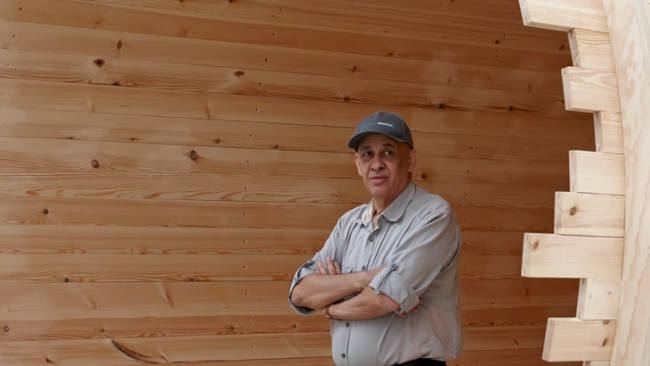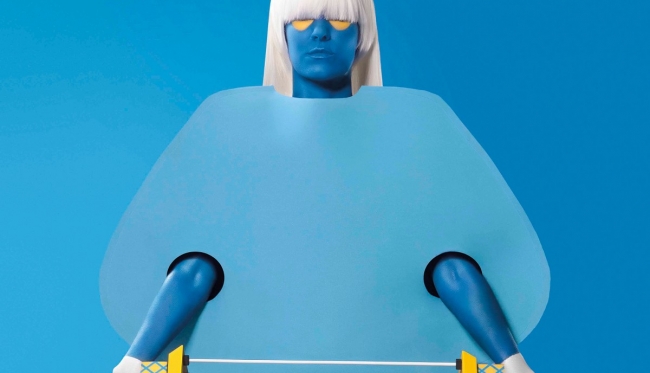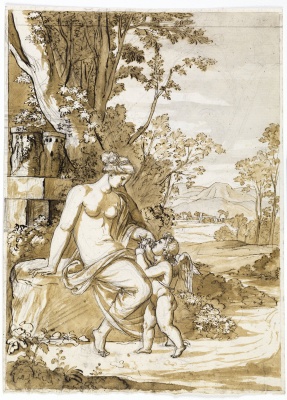Descripción de la Exposición
Routes to the mind that lead into the sunset. The journey of charcoal to the dust of the desert. Matias Duville thus describes the large drawings made in sanguine (red charcoal) that are gathered at the exhibition Projection Soul, his third solo show at Galeria Luisa Strina.
Each time the artist begins a series with a previously unused raw material, he says that a period of experimentation with the material is needed for a while: “I feel in a new environment and it takes time to equalize the structure of the material with that of the works; it’s the beginning of a new reality,” explains Duville. Working with sanguine for a year and a half now, he affirms that after about ten drawings, he started thinking about the sensation of looking in the direction of the sun with your eyes closed. “The driving force of these works is the sun, the real one. The paths or roads that seem to lead to the sun are a great mystery.”
Prior to starting the Red series, Matias had worked on a group of drawings made with mud during an artistic residency in Rio de Janeiro in 2018, when he also held an experience / workshop with art students at Parque Lage. “When I use mud, I’m the drawing because it’s a wet, fast and unmanageable material. The mind also travels fast without filters. Here the material is dry, time consuming and lyrical,” Duville compares the two very different quests.
“I believe in that parallel reality, in an augmented perception, the amplification of one’s mind; each drawing is as activation of a new mental area for me”, tells the artist. His interest lies in the fact that, even though the works may be read as oneiric, they are located in a concrete space, they belong in this world. This is perhaps what guided the series of sculptures that share the exhibition space at Galeria Luisa Strina with the red drawings.
Made in clay cast in bronze, the pieces are created from a kind of plan, on which the artist prints nets, that create a grid pattern. “In the sculptures, you have a different way of viewing the same scene of the drawings, that is, the contrast between weight and levitation, between full and empty. They are like microuniverses within the landscapes.”
Duville explains that when he produces his sculptures, he imagines that he is manipulating a kind of total matter, as if there is nothing left and the whole context in which he is inserted disappears. “The sculptures are a dialogue between matter and emptiness. Their visuality is something intermediate between objects that could come from outer space or the ocean.” Some look supported, others lose their gravity point, seeming to gravitate, like asteroids.
ABOUT THE ARTIST
Born in Buenos Aires, where he lives and works, Matias Duville is considered a reference in contemporary Latin American drawing. One of the most outstanding characteristics in the work of the artist is the reflection and research in the use of different materials such as Ball-point pen, charcoal, acrylic, soothe, moquette, conglomerate plates, in which he works following the coordinates that each material dictates.
Important Public Collections holding his work: Tate Modern, London, UK; Blanton Museum. Austin, Texas, USA; Patricia P. de Cisneros Collection. New York, USA; Pierre Huber Collection. Genève, Suisse; Fondazione Cassa di Risparmio di Modena, Italia; ARCO Foundation. Madrid, España; MACRO. Museo de Arte Contemporáneo de Rosario, Argentina; MALBA. Museo de Arte Latinoamericano de Buenos Aires, Argentina; MALI. Museo de Arte de Lima, Perú; MUSAC. Museo de Arte Contemporáneo de Castilla y León, España; MAMBA. Museo de Arte Moderno de Buenos Aires, Argentina; Museum of Latin American Art, Long Beach, USA.
Recent solo exhibitions include: Desert means ocean, Museum of Latin American Art, Long Beach, EUA (2019); Arena Parking, Centro Cultural Recoleta – Sala Cronocopios, Buenos Aires, Argentina (2015); Mutações, Museu de Arte Moderna do Rio de Janeiro, Brazil (2015); Espacio, proyectil, Galeria Luisa Strina, São Paulo, Brazil (2015); Life in an instant, Galerie Georges-Philippe & Nathalie Vallois, Paris, França (2014); Discard Geography at École Nationale Supérieure Des Beaux-arts De Paris, France (2013).

Actualidad, 07 oct de 2019
#loquehayquever en Brasil: gran retrospectiva Cildo Meireles e inauguración Bienal de Curitiba
Por PAULA ALONSO POZA
Mientras que centenar y medio de obras del gran artista carioca ocupan el SESC Pompeia, la 14ª Bienal de Curitiba se extiende más allá de su ciudad natal y cruza varias ...

Actualidad, 25 sep de 2019
#loquehayquever en Argentina: retrospectivas inéditas en MACBA, MAMBA y Museo Eduardo Sívori
Por PAULA ALONSO POZA
La Colección Espinosa y los fondos del MACLA se dan cita en un diálogo inédito entre Luis Tomasello y Manuel Espinosa que puede verse en el MACBA. Esta monográfica de arte cinético ...

Premio. 13 mar de 2025 - 27 abr de 2025 / Madrid, España
Componer Saberes para imaginar y construir futuros sostenibles

Exposición. 10 mar de 2025 - 22 jun de 2025 / Museo Nacional del Prado / Madrid, España
Cambio de forma: Mito y metamorfosis en los dibujos romanos de José de Madrazo

Formación. 01 oct de 2024 - 04 abr de 2025 / PHotoEspaña / Madrid, España